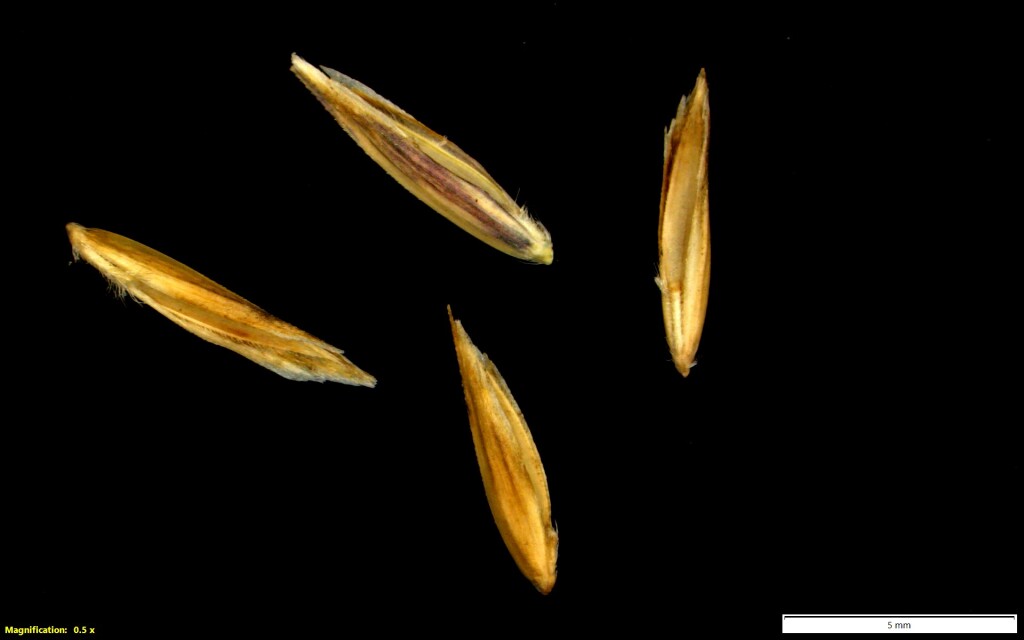Hookerochloa hookeriana
(F.Muell. ex Hook.f.) E.Alexeev Hooker's FescueTufted, sometimes colony-forming perennial, culms smooth, to 160 cm high. Leaf-blades flat or folded, to 35 cm long and 8 mm wide, scabrous; sheaths smooth or slightly scabrous, brown and shining; ligules to 7 mm long. Panicle to 50 cm long, very loose with long, often drooping branches. Spikelets 3–6-flowered, 9–13 mm long, green or purplish; glumes 5–8 mm long, subequal or the upper up to c. 1 mm longer than lower, scabrous along the nerves; lemma lanceolate, 7–9 mm long, scabrous along the 5–11 nerves, smooth or minutely scabrous between the nerves, acute, obtuse or narrowly bilobed at the apex, unawned or with the midvein exserted as an awn to c. 3 mm long; callus bearded with a tuft of white hairs 0.5–1.5 mm long; palea equal to lemma. Flowers Dec.–Mar.
GleP, VVP, GipP, OtP, WaP, CVU, EGL, EGU, HSF, HNF, OtR, MonT, VAlp. Also NSW, ACT, Tas. A rather uncommon species of slightly swampy situations in the cool lowlands in the west (Portland, Warrnambool and Colac districts), near Healesville, and in subalpine to alpine areas in the east (particularly in the Benambra-Wulgulmerang area).
Plants from the lowlands tend to be robust with broad, flat leaves while those in the eastern ranges are often smaller plants with a compact tuft of rather rigid, channelled leaves.
Walsh, N.G. (1994). Poaceae. In: Walsh, N.G.; Entwisle, T.J., Flora of Victoria Vol. 2, Ferns and Allied Plants, Conifers and Monocotyledons, pp. 356–627. Inkata Press, Melbourne.
 Spinning
Spinning
